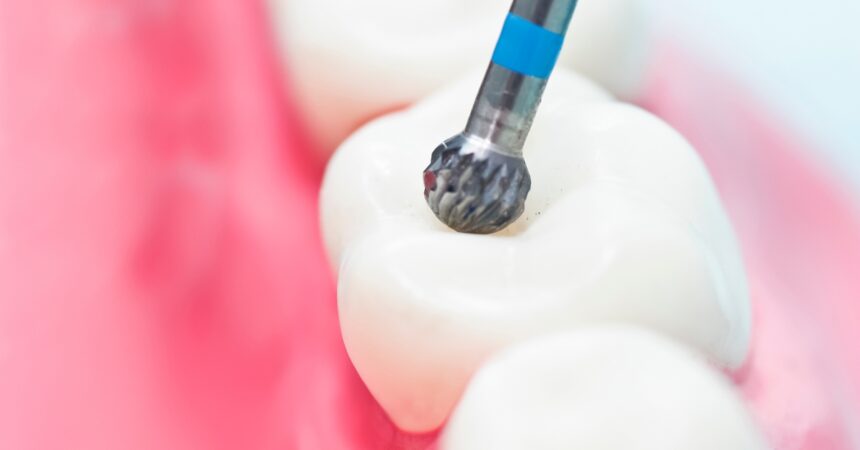For decades, dental straight drills have been a cornerstone in the field of dentistry, especially for procedures involving tooth alignment and orthodontic treatments. While these tools are effective, they come with their own set of drawbacks. This blog post delves into understanding dental straight drills, their potential concerns, and explores viable alternatives. Whether you’re a dentist or an oral surgeon, this comprehensive guide aims to provide valuable insights to enhance your clinical practice.
What Are They and What Are They Used For?
Dental straight drills are traditional tools used primarily for drilling and preparing teeth for various restorative and orthodontic procedures. These drills play a crucial role in procedures involving dental implants, root canals, and cavity fillings. They are designed to be precise and effective, allowing dentists to perform intricate operations with a high degree of accuracy.
How Do They Work?
Straight drills operate at high speeds, utilizing a combination of rotary and oscillatory motions to cut through enamel, dentin, and other hard tissues. Powered by air turbines or electric motors, they are equipped with various interchangeable drill bits tailored for specific tasks. The precision and control offered by these drills make them indispensable in many dental procedures.
Potential Concerns with Dental Straight Drills
While effective, dental straight drills have their own set of concerns that can impact both patients and practitioners.
Discomfort During the Procedure
One of the primary concerns is the discomfort experienced by patients during drilling. The high-speed rotation and pressure can cause significant discomfort, especially for those with sensitive teeth.
Risk of Tooth Damage
The aggressive nature of straight drills means there is a risk of inadvertently damaging the tooth structure. Over-drilling or applying too much pressure can lead to complications, including fractures or weakening of the remaining tooth structure.
Noise and Vibration
The noise and vibration produced by dental straight drills can be unsettling for patients. The high-pitched sound is often associated with anxiety and fear, making dental visits a stressful experience for many.
For those specifically interested in innovations related to dental implants, consider exploring products from gdt implants to further enhance your practice.
Alternatives to Dental Straight Drills
Given these concerns, it’s worth exploring alternatives that can offer similar results with fewer drawbacks. Here are some of the most popular alternatives:
Clear Aligners (e.g., Invisalign)
Clear aligners have revolutionized the field of orthodontics. Brands like Invisalign use custom-made, transparent trays that gradually shift teeth into the desired position. These aligners are not only more comfortable but also aesthetically pleasing, making them a popular choice among adults and teenagers alike.
Lingual Braces
Lingual braces are similar to traditional braces but are placed on the inner surface of the teeth, making them virtually invisible from the outside. This option provides the benefits of conventional braces without the visible appearance of metal brackets.
Ceramic Braces
Ceramic braces function like traditional metal braces but use clear or tooth-colored brackets instead of metallic ones. These braces are less noticeable and offer an aesthetic advantage, particularly for adults concerned about their appearance during treatment.
Self-ligating Braces
Self-ligating braces use a specialized clip mechanism instead of elastic bands to hold the wire in place. This reduces friction and allows for more efficient tooth movement. They can be more comfortable and require fewer adjustments, making them a convenient alternative to traditional braces.
Choosing the Right Option for You
Selecting the appropriate alternative to dental straight drills depends on various factors, including age, severity of misalignment, budget, and patient preferences.
Factors to Consider
- Age: Some treatments are better suited for specific age groups. For example, clear aligners are often preferred by adults, while braces might be more suitable for younger patients.
- Severity of Misalignment: The complexity of the case will dictate the best treatment option. Severe misalignments may require more intensive interventions.
- Budget: Different treatments come with varying costs. Clear aligners can be more expensive than traditional braces, so budget considerations are crucial.
- Aesthetic Concerns: Patients who are conscious about the appearance of their orthodontic appliances might prefer less visible options like clear aligners or ceramic braces.
Consulting with a Dentist
Ultimately, the best way to choose an appropriate alternative is by consulting with a dental professional. Dentists and oral surgeons can provide personalized recommendations based on a thorough examination and diagnostic imaging. They can also explain the pros and cons of each option, ensuring that patients make an informed decision.
Conclusion
As dental technology continues to evolve, alternatives to traditional dental straight drills are becoming increasingly viable. From clear aligners to self-ligating braces, there are numerous options that cater to the needs of modern patients. By understanding these alternatives and considering key factors, both dentists and patients can make better decisions that lead to improved outcomes and enhanced patient experiences.
By staying informed and exploring all available options, dental professionals can continue to push the boundaries of what’s possible in oral healthcare, ensuring that patient comfort and satisfaction remain at the forefront of their practice.






